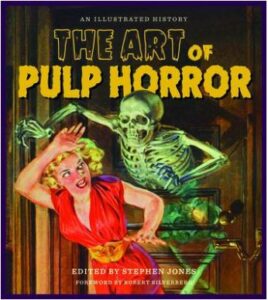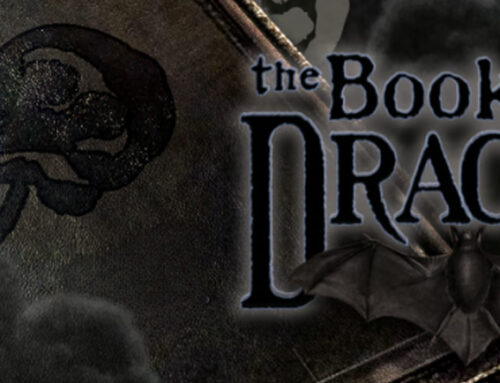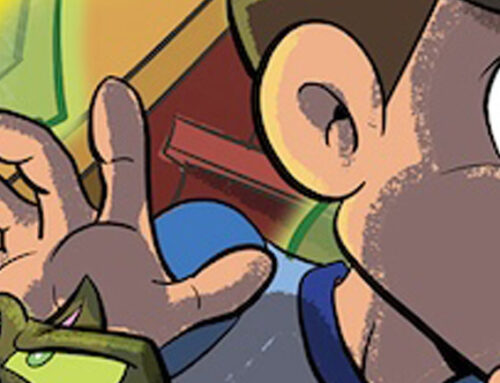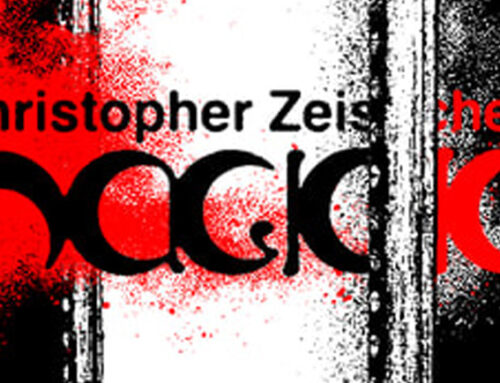There’s  something about the cheap, low rent escapism of pulp horror that sets it apart from the “high brow”, not only in content but in atmosphere and artistic sensibility. The Art of Pulp Horror revels in that distinction, exploring the evolution of horror for mass consumption from the Victorian-era penny dreadfuls to poverty row cinema and beyond. The book collects hundreds of high-quality pieces of art and is a must-have for both horror historians and connoisseurs of horror art.
something about the cheap, low rent escapism of pulp horror that sets it apart from the “high brow”, not only in content but in atmosphere and artistic sensibility. The Art of Pulp Horror revels in that distinction, exploring the evolution of horror for mass consumption from the Victorian-era penny dreadfuls to poverty row cinema and beyond. The book collects hundreds of high-quality pieces of art and is a must-have for both horror historians and connoisseurs of horror art.
The Art of Pulp Horror is organized chronologically and broken into chapters based on a type of media– for example, there are sections dedicated to topics like pre-code horror movies, horror comics and the resulting moral panic, and exploitation in cinema and print. Each chapter is introduced by an essay on the material and interspersed with essays on individual creators, resulting in a near documentarian approach to the material. Every image has been lovingly sourced and is presented with the year it was produced and the artist whenever possible. The whole book feels like a museum exhibition on pulp horror, you can all but read the placards and easily imagine standing in a gallery organized just so.
My minor detraction is the book’s focus more on the history of the associated media than on the visual art which is otherwise the primary focus. At first, this is actually positive, as I’m sure many readers aren’t incredibly familiar with the penny dreadful era and the beginnings of pulp magazines and paperback publishing which are essential to the evolution of the art. I only wish there were a few more sections on the people behind the magazine covers, movie posters, and comics presented. For example, the section on Margaret Brundage is a major highlight, and I think more connections between the art and the artists themselves would push the book even further.
I would also take a moment to offer a minor content warning to those who aren’t familiar with pulp horror and its subject matter– pulp was almost always meant to gratuitous, sleazy, outlandish, or some combination therein. That being the case, expect some of the art here to be ribald and regressive. Not only are there plenty of pieces that depict women in some sort of half-nude peril, but there are also plenty of racially insensitive images, primarily those involving Fu Manchu and pulp horror’s obsession with foreign mysticism. That comes with the territory for pulp horror, there’s no escaping it, and I’m glad that this book doesn’t attempt to sanitize the history of low brow horror, opting instead to present things warts and all.
Altogether, this is a stunning collection of art. In a world of modern graphic design and safer, often formulaic art decisions it’s a real treat to see the outlandish ideas that came before. Editor Stephen Jones has even taken things a step further in including several modern pieces of art sprinkled throughout which pay homage to pulp horror and really drive home the extent to which pulp has inspired creators the world over. If you’re interested in understanding the history of the genre and its evolution The Art of Pulp Horror deserves a place on your shelf.
Rating
9 out of 10 Cheap Magazines







